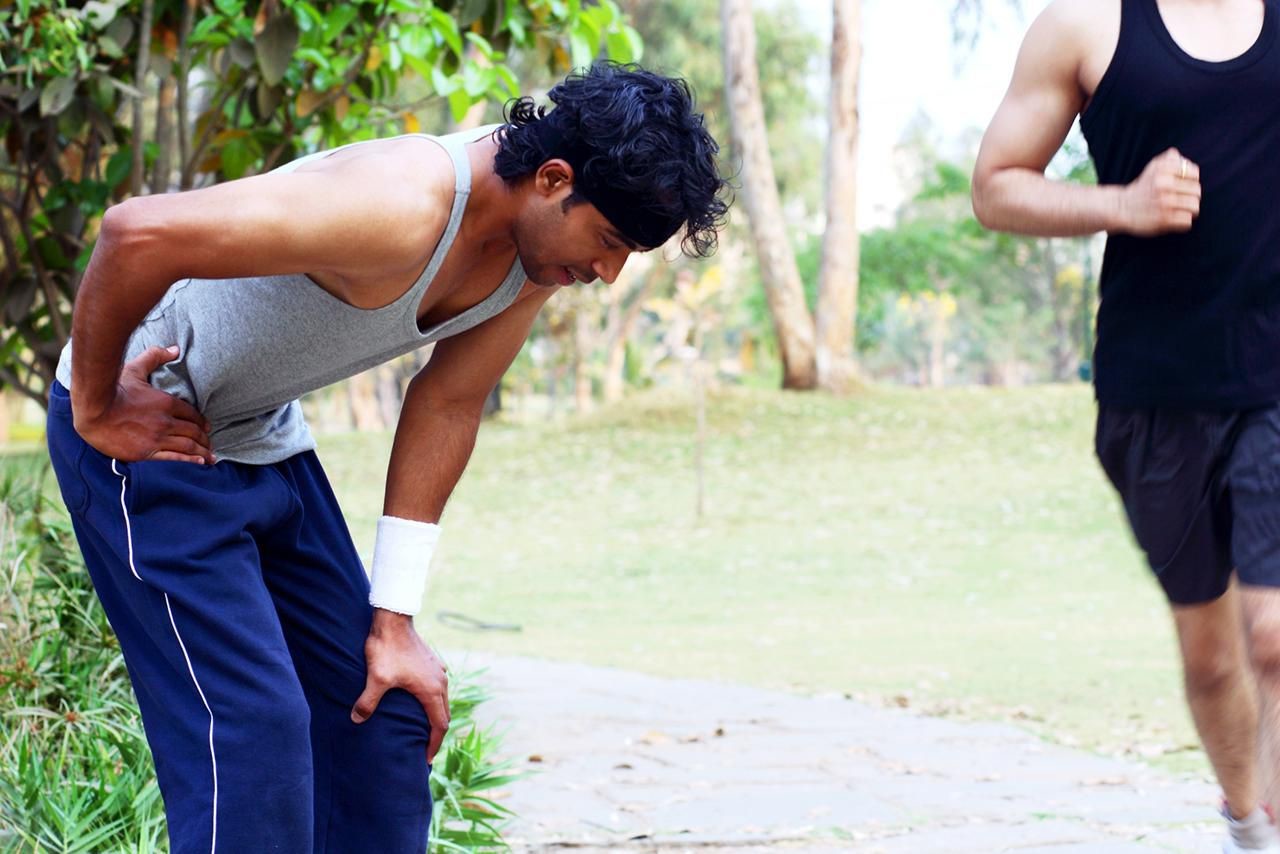Running News Daily
Running News Daily is edited by Bob Anderson. Send your news items to bob@mybestruns.com Advertising opportunities available. Train the Kenyan Way at KATA Kenya and Portugal owned and operated by Bob Anderson. Be sure to catch our movie A Long Run the movie KATA Running Camps and KATA Potato Farms - 31 now open in Kenya! https://kata.ke/
Index to Daily Posts · Sign Up For Updates · Run The World Feed
Side Stitches While Running, Why Do You Get Them and What You Can Do To Avoid Them?
It’s something endurance athletes are particularly prone to – stitches. That unpleasant pain beneath the ribs has brought many an athlete to their knees, making for a sorry end to their race or match. But what exactly is a stitch, what causes a side stitch, is there anything that can help when you get it, and can anything be done to prevent it? pjuractive takes a closer look.
WHAT IS A STITCH?

When people talk of side stitch, they are referring to a stabbing pain beneath the ribs which athletes suffer from, either on the left-hand side near the spleen or on the right around the liver area. It usually starts off fairly mildly, but can become so severe that athletes have to stop what they are doing. It mostly affects endurance athletes, such as runners, cyclists, swimmers, and rowers.
WHAT CAUSES A STITCH IN THE FIRST PLACE?

A stitch is brought on by physical exertion. It is something a lot of endurance athletes suffer with from time to time, yet the exact cause is still not known. There are plenty of theories about why so many athletes repeatedly suffer from the pain associated with stitches. One suspected cause is reduced blood supply to the organs, such as the spleen or liver. Incorrect breathing, a bent or stooping posture, overstimulation of the intercostal nerves, and an awkward running style can also bring on a side stitch. In addition, it is also assumed that incorrect food consumption and fluid intake can play a role – exercising on a full stomach may in fact be the crucial factor. The blood which the body needs for digestion means that there may not be enough available to the muscles, which can lead to a stitch. Being overweight, a lack of oxygen when doing intensive training, weak core muscles, and even failure to do sufficient warm-up exercises may also be causes.
The vast number of possible causes explains why so many athletes suffer from stitches so often. But can they be prevented? And if so, how?
HOW TO PREVENT STITCHES
Athletes naturally want to prevent stitches in the first place, yet because it is not clear what actually causes side stitch, it is difficult to prevent them. However, there are a few tips which athletes should bear in mind.
Endurance athletes should start their training gradually and slowly increase the intensity. It is only by doing this that the body can adjust the blood supply accordingly. It is also important to be aware of your breathing. Whatever the sport, breathing should always be controlled and abdominal breathing techniques should also be used. When running, for example, athletes are advised to breathe in for two to four paces and out again for exactly the same length of time. The faster the tempo, the fewer steps you take for each breath. When running slowly, take three to four – i.e. more steps per breath. It is also important to warm up properly to prepare the body for the exertion to come. This can prevent stitches, too.
Consumption of food should also be planned in a way that minimizes the risk of getting a stitch. It is recommended that athletes leave at least three hours after a big meal before a training session. Small snacks that are easy to digest are of course fine to eat before training.
Building up strong core muscles can also help prevent stitches in endurance athletes, as poor posture can cause side stitch. Stomach muscles are also important here.
It seems that older people don’t need to worry so much about preventing stitches, as susceptibility appears to decrease with age.
WHAT TO DO WHEN IT’S ALREADY TOO LATE – WAYS HOW TO GET RID OF SIDE STITCH
Have you followed all the tips above, yet still you’ve ended up with a stitch while running, cycling, etc.? There are a few things you can do when this happens:
No matter what the situation, slow down. Whether it’s your cycling speed or your running tempo – to prevent a stitch from getting even worse, first of all it’s important to scale down the intensity of your training a little.
If you are suffering from a side stitch, your breathing must be controlled. Correct breathing helps the diaphragm and the respiratory muscles to relax – you should take really deep breaths and then breathe out very slowly. This can help improve your depth of breathing and allows the muscles to recover.
It can also help to press your hand against the painful area, but only when you breathe in. Release the pressure from your hand again on the out-breath.
If it gets so bad that you have to take a break from your training, you can do light upper-body stretches. The best thing to do is to bend your upper body to the side. Each time you breathe out, you can then stretch your upper body a little further.
It can also help to stand still, control your breathing, and lean your upper body forward. This will relax your abdominal cavity and your diaphragm.
Even though we haven’t been able to find out what exactly causes side stitches when running, cycling and the like, there are ways how to prevent side stitch. And if all that doesn’t help and you still get this unpleasant pain, it’s worth following our tips above. Happy endurance training – despite the stitch!
by Pjur Active
Login to leave a comment




